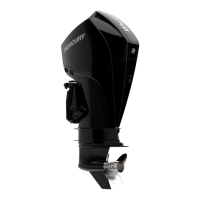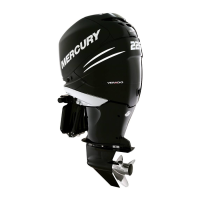Step Action Yes No
3
Check for O2 sensor heater, O2 sensor range high
or low, and O2 sensor open‑circuit faults. To check
these, the key should be turned to the on position,
but the engine should not be running. Do any of
these faults exist?
Check for continuity in the
harness, and for solid
connections. Check for open
fuses in the heater circuit.
The quickest and easiest way
to diagnose an O2 sensor is
to replace it with a known
good sensor, clear the faults,
and determine if the fault
returns under the same
conditions. Go to step 8.
Go to the next step.
4
Check the fuel pressure in the fuel rails and ensure
that it meets specifications. No fault will be triggered
if this value is out of specification. Is the fuel
pressure outside of specification?
Refer to the engine service
manual, repair the fuel system
as necessary, and go to step
8.
Go to the next step.
5
Check the fuel quality by using a tank of known
good fuel. Does this clear the problem?
Drain the contaminated fuel
from the engine and tank, and
replace it with good fuel. Go
to step 8.
Go to the next step.
6
Check the spark plugs, leads, and coils for proper
spark. Note that the 3.4L and 4.6L engines use
waste spark ignition, and a problem with a coil may
affect two cylinders. Has an issue been detected
with these components?
Refer to the engine service
manual, repair or replace
components as necessary,
and go to step 8.
Go to the next step.
7
Check the fuel injectors for proper operation. Have
you identified an issue with an injector?
Refer to the engine service
manual, repair or replace
components as necessary,
and go to step 8.
Go to the next step.
8
Clear all faults, and after Freeze Frame data is
recorded, clear the Freeze Frame buffer. Water test
the boat. Does the fault reoccur?
Contact Mercury Product
Support.
Put the engine back into
service.
PCM 112 and Engine Control Overview
Page 2B-4 © 2018 Mercury Marine 90-8M0146617 eng JULY 2018

